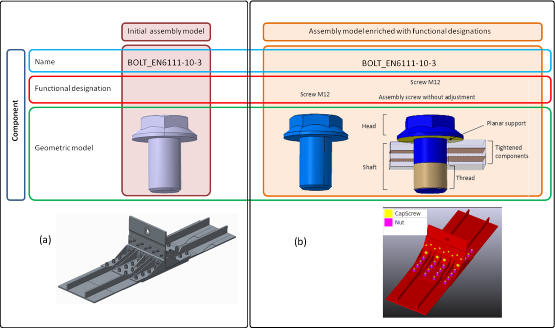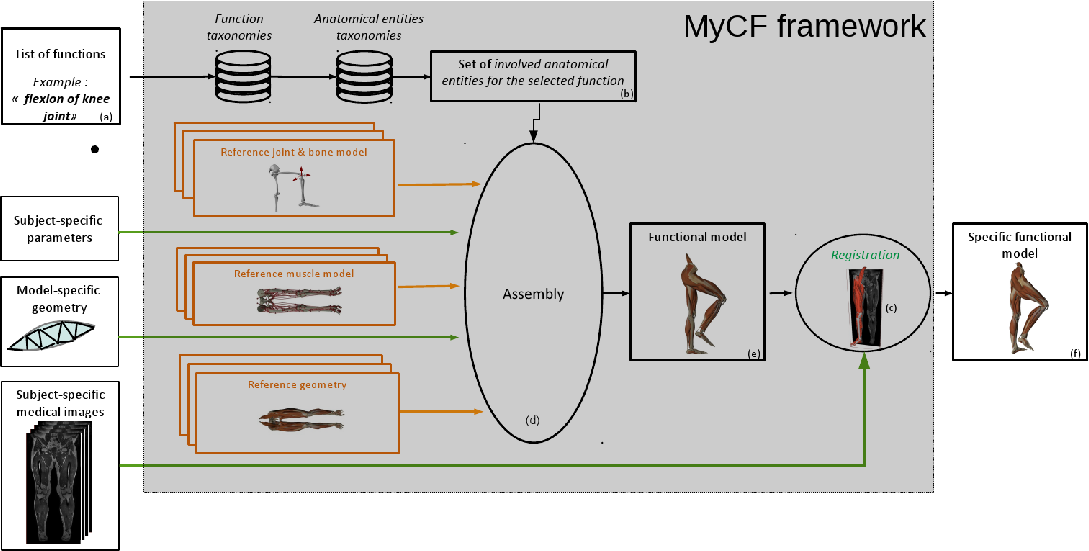Section: New Results
Knowledge-based models for narrative design
Computational model of film editing
Participants : Remi Ronfard, Quentin Galvane.
Collaboration with the Mimetic team (Marc Christie) is continuing on this topic as part of the CINECITA (ANR jeune chercheur) and CHROME (ANR) projects.
We presented a survey of automatic video editing and new results from our ongoing collaboration at the first workshop on intelligent cinematography and editing (WICED) which took place during the Foundation of Digital Games (FDG) international conference [18] , [14] .
Stochastic Plex Grammars
Participant : Remi Ronfard.
During Quentin Doussot's master thesis, we experimented with stochastic plex grammars, which proved to be efficient for generating 3D scenes in the style of Keith Haring [17] . The model is able to generate static scenes by assembling colorful body parts into Keith Haring figures. The model is also able to simulate Markov chains of such figures by randomly changing attributes and composition of the scene.
Reframing theatre performances
Participants : Remi Ronfard, Vineet Gandhi.
In 2012, we made full-hd video recordings of rehearsals and performances at Celestins - Theatre de Lyon:
A l'Ouest, directed by Nathalie Fillion. Coproduction - Théâtre du Rond-Point, Célestins, Théâtre de Lyon, Cie Théâtre du Baldaquin, AskUs , Le Gallia Théâtre-Saintes. Coproduction - Théâtre du Rond-Point, Célestins, Théâtre de Lyon, Cie Théâtre du Baldaquin, AskUs , Le Gallia Théâtre, Saintes.
Lorenzaccio, directed by Claudia Stavisky, Théâtre de Saint Petersbourg.
Mort d'un commis, directed by Claudia Stavisky, Célestins, Théâtre de Lyon.
As part of his PhD thesis, Vineet Gandhi developped novel algorithms for actor detection and naming. This has been tested on movies as well as theatre performances. Current work is focusing on automatically reframing those recordings into cinematically-valid shots focusing on one or more actors.
A related thread of work was started for semantic annotation of the recordings using the syntax and semantics of blocking notations, a symbolic notation used in North-American theatres [25] .
Virtual theatre rehearsals
Participant : Remi Ronfard.
We are starting to investigate the possibility of rehearsing theatre plays with real and virtual actors, using extensions of interactive scores initially proposed for computer music. A position paper was presented to researchers in theatre studies during a seminar on the notation of theatre [24] .
Extracting functional information from assembly models
Participants : Jean-Claude Léon, Ahmad Shahwan, Olivier Palombi.
Assembly models of products, as available from CAD software reduce to a set of independent geometric models of its components and a logical structure of the assembly described as a tree containing components' names. Such a model lacks of geometric connections between its components and the work performed at 6.5 contributes already to structure the geometric model of each component with its geometric interfaces. However, the assembly tree structure and components' names still have no connection with the geometric model of components and their names don't convey robust information because their are user chosen. Here, the purpose is to set tight connections between components' geometric models and their functions. Using dualities between geometric interfaces and interaction forces, it is possible to initialize qualitative mechanical values at each geometric interface, producing different possible configurations.
Then, the proposed approach builds upon relationships between function, behavior and shape to derive functional information from the geometry of component interfaces. Among these concepts, the concept of behavior is more difficult to set up and connect to the geometry of interfaces and functions. Indeed, states and design rules are introduced to express the behavior of components through a qualitative reasoning process [7] . This reasoning process, in turn, takes advantage of domain knowledge rules and facts, checking the validity of certain hypotheses that must hold true all along a specific state of the product's lifecycle, such as operational, stand-by or relaxed states. Eliminating configurations at geometric interfaces that contradict one or more of those hypotheses in their corresponding reference state reduces ambiguity, subsequently producing functional information in a bottom-up manner.
This bottom-up process starts with the generation of a Conventional Interfaces Graph (CIG) with components as nodes, and conventional interfaces (CI: the geometric interfaces) as arcs. A CI is initially defined by a geometric interaction that can be a contact or an interference between two components. CIs are then populated with Functional Interpretations (FI) according to their geometric properties, producing potentially many combinations. A first step of the reasoning process, the validation against reference states, reduces the number of FIs per CI. Then, a matching process takes place using inferences of an ontology reasoner to produce a functional designation of each component. The ontology is based on several taxonomies: conventional interfaces, functional interfaces and functional designations that are connected through the qualitative reasoning process. As a result, the geometric model of each component assigned with a functional designation becomes intrinsically structured with functional interfaces (see Figure 13 ). Structured models can be used to perform high level shape transformations like virtual prototypes. MyCorporisFabrica is a software framework we started to connect to. This activity is part of the ANR ROMMA project. It is a first contribution to simulation scenarios.
|
Anatomical models
Participants : Ali-Hamadi Dicko, Olivier Palombi, François Faure.
We continue the development and the exploitation of MyCF, our ontology-centered anatomical knowledge base, in collaboration with the Grenoble University Hospital, and the DEMAR team in Montpellier (Benjamin Gilles).
We have presented a novel pipeline for the construction of biomechanical simulations by combining generic anatomical knowledge with specific data [27] , [21] , as illustrated in Figure 14 . Based on functional descriptors supplied by the user, the list of the involved anatomical entities (currently bones and muscles) is generated using formal knowledge stored in ontologies, as well as a physical model based on reference geometry and mechanical parameters. This simulation-ready model can then be registered to subject-specific geometry to perform customized simulations. The user can provide additional specific geometry, such as a simulation mesh, to assemble with the reference geometry. Subject-specific information can also be used to individualize each functional model. The model can then be visualized and animated. This pipeline dramatically eases the creation of biomechanical models.
|
Managing morphological and functional information of the human body
Participants : Olivier Palombi, Ali-Hamadi Dicko, François Faure, Jean-Claude Léon, Ahmad Shahwan.
My Corporis Fabrica (MyCF) is an anatomical knowledge database. During 2012, we have linked functional entities defined in MyCF to the involved anatomical structures. The scope has been limited to the musculoskeletal system. Based on this brain new formal description of the functional anatomy of limbs, we present a novel pipeline for the construction of biomechanical simulations by combining generic anatomical knowledge with specific data. This pipeline dramatically eases the creation of biomechanical models [27] .
MyCF-Browser which is the GUI of MyCF has been completely reviewed and rewritten. The MyCf's style software architecture is REST (Representational State Transfer) that has emerged as a predominant Web service design model. The anatomical knowledge is now available through a WEB service. The next step is to write a full web MyCF-Browser. MyCF browser is now available on line: http://www.mycorporisfabrica.org/ . The MyCf's generic programming framework can be used for other domains. The link with semantic and 3D models matches research activities of IMAGINE towards interactive digital creation media. Anatomy can be seen as a study case.




